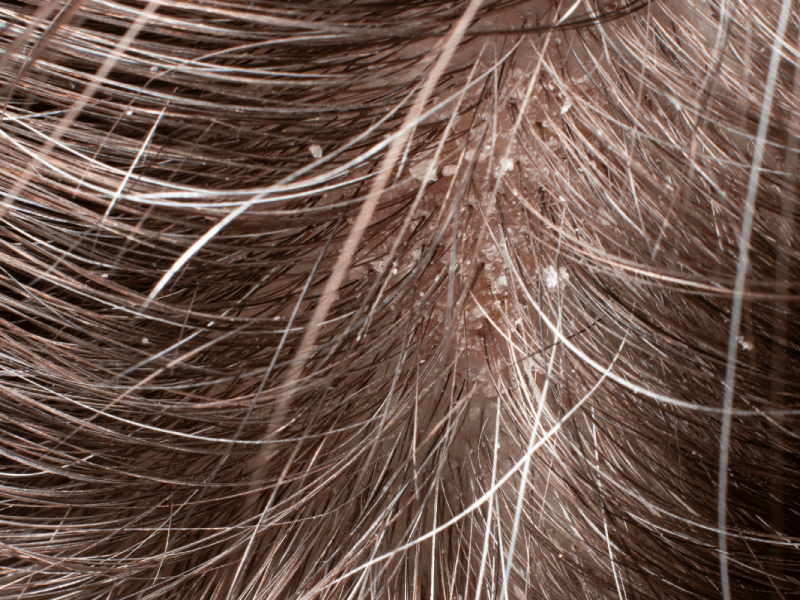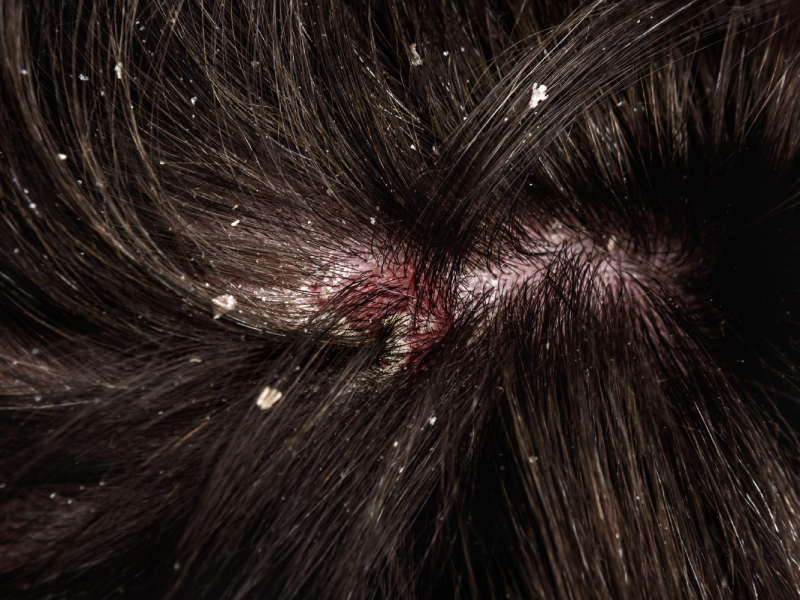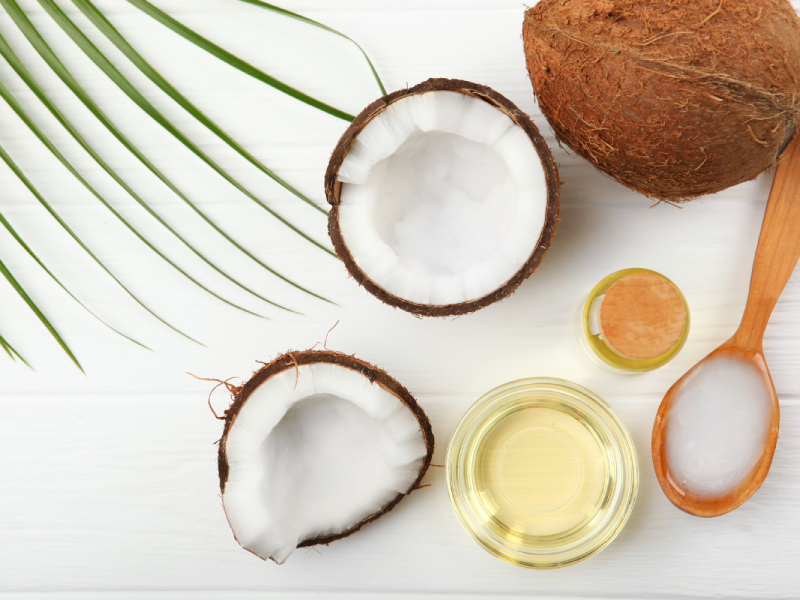In the ever-enigmatic world of dermatology, where an array of skin conditions often perplex and trouble individuals, one particularly bothersome issue that many face is eyebrow dandruff, scientifically known as seborrheic dermatitis on eyebrows. This article endeavors to provide a comprehensive guide to understanding and managing eyebrow dandruff, exploring seborrheic dermatitis on the face, delving into the complexities of dandruff, touching on contact dermatitis, and uncovering a plethora of online dandruff treatment options.
Understanding Eyebrow Dandruff
Eyebrow dandruff is a dermatological concern that often plagues individuals. It’s essentially a localized form of seborrheic dermatitis, a condition that many people are familiar with in the context of the scalp. Eyebrow dandruff is characterized by the presence of flaky, dry skin on the eyebrows, often accompanied by redness and itching. It’s a condition that not only affects one’s appearance but can also lead to considerable discomfort.

What Causes Eyebrow Dandruff?
The exact cause of eyebrow dandruff remains somewhat elusive. Still, it is largely believed to be related to the overgrowth of a yeast-like fungus known as Malassezia. Several factors can cause or exacerbate this overgrowth, including:
- Skin Conditions: Individuals with pre-existing skin conditions, such as psoriasis or eczema, are more susceptible to developing eyebrow dandruff.
- Stress: High stress levels can contribute to the worsening of seborrheic dermatitis symptoms, including eyebrow dandruff.
- Hormonal Changes: Hormonal fluctuations can trigger or exacerbate this condition.
- Weather: Extreme weather conditions, particularly cold and dry climates, can exacerbate eyebrow dandruff symptoms.
Seborrheic Dermatitis on the Face
While we’ve focused on eyebrow dandruff thus far, it’s crucial to recognize that seborrheic dermatitis doesn’t limit itself to the eyebrows. It can also extend its influence to the face, making it important to understand its symptoms for effective management.
Symptoms of Seborrheic Dermatitis on the Face
Seborrheic dermatitis on the face presents a wide array of symptoms that can range from mild to severe. Understanding these symptoms is key to effective recognition and management:
- Redness: Affected areas on the face typically appear red, sometimes leading to misidentification as a rash.
- Scaling and Flaking: Similar to eyebrow dandruff, seborrheic dermatitis on the face results in dry, flaky skin. This flakiness can be particularly noticeable in areas like the eyebrows, around the nose, and on the cheeks.
- Itching: The itching associated with seborrheic dermatitis on the face can vary in intensity, often causing considerable discomfort. The itching can be exacerbated by the flaking and dryness of the skin.
- Burning Sensation: Some individuals report a burning or stinging sensation in affected areas, especially when the condition is at its peak.
- Swelling: In severe cases, facial seborrheic dermatitis can lead to facial swelling, making it even more uncomfortable and noticeable.
Dandruff: Not Just a Scalp Problem
When we hear the term “dandruff,” we often think of the scalp, but it’s crucial to recognize that dandruff is not restricted to this area. In fact, it can manifest on the eyebrows and face in the form of seborrheic dermatitis, and this can be particularly perplexing.

Dandruff on the Scalp vs. Eyebrows and Face
Dandruff on the scalp is primarily characterized by the overproduction of skin cells, leading to flaking. In contrast, seborrheic dermatitis on the eyebrows and face involves a more intricate interplay of factors. These factors may include yeast overgrowth, inflammation, and individual predispositions, making it a multifaceted skin concern.
Dealing with Contact Dermatitis
In the realm of skin conditions, it’s not just seborrheic dermatitis that can cause confusion; contact dermatitis often emerges as another source of perplexity. This condition can sometimes be mistaken for seborrheic dermatitis but is rooted in contact with an allergen or irritant.

Contact Dermatitis Symptoms
Contact dermatitis, like seborrheic dermatitis, can manifest with various symptoms:
- Redness: The skin in the affected area becomes red, sometimes accompanied by warmth and slight swelling.
- Blisters: In severe cases, contact dermatitis can lead to the formation of blisters. These can be filled with clear fluid and are often quite painful.
- Itching and Burning: The itching and burning sensations associated with contact dermatitis can be intense and are typically triggered by the irritant. Scratching can worsen these symptoms.
- Dryness and Peeling: Over time, the affected skin may become dry and begin to peel. This can be especially uncomfortable, as it may result in more itching and discomfort.
Exploring Dandruff Treatment Options
Effective treatment is the key to managing eyebrow dandruff, seborrheic dermatitis, or any form of dandruff. Fortunately, the internet has become a valuable resource for individuals seeking information and products to address these conditions effectively.
- Medicated Shampoos: Numerous medicated shampoos are available to help treat seborrheic dermatitis on the scalp and other affected areas, including the eyebrows and face. These shampoos often contain active ingredients like ketoconazole or selenium sulfide, which can help control yeast overgrowth.
- Topical Creams: Both prescription and over-the-counter creams can provide relief from the symptoms of seborrheic dermatitis. These creams often contain corticosteroids or antifungal agents to reduce inflammation and control the underlying causes of the condition.
- Home Remedies: For those who prefer natural remedies, options like coconut oil and aloe vera can offer relief from dandruff and itching. Coconut oil can moisturize the affected skin, reducing dryness and flakiness, while aloe vera has anti-inflammatory properties that can soothe itching and redness.

- Online Dandruff Treatment: Whether you’re dealing with seborrheic dermatitis or a milder form of dandruff, the online dandruff treatment services offer a wealth of information and options to help you effectively manage your condition.
Final Thoughts
Managing eyebrow dandruff and related conditions, such as seborrheic dermatitis on the face, can be challenging. While the causes remain somewhat elusive, understanding the symptoms is crucial for effective treatment.
Distinguishing between scalp dandruff and dandruff on the eyebrows and face is essential, as these variations require different treatment approaches. Contact dermatitis, often confused with seborrheic dermatitis, emphasizes the importance of accurate diagnosis.
Whether opting for medicated shampoos, topical creams, or natural remedies, online dandruff treatment resources offer convenience and accessibility. By leveraging these tools and staying informed, you can effectively manage and conquer eyebrow dandruff and related conditions. Remember, you’re not alone on this journey, and with the right information and support, healthier, dandruff-free skin is attainable.
FAQs
- Can eyebrow dandruff be linked to allergies?
Allergies may exacerbate dandruff symptoms, but the condition itself is not an allergic reaction.
- Is it possible to prevent dandruff from recurring?
While dandruff may reoccur, maintaining a consistent dandruff management routine can help reduce its frequency and severity.
- Can dandruff lead to hair loss?
Severe and untreated dandruff may lead to hair loss, but this is not a common outcome for most individuals with dandruff.
- Is seborrheic dermatitis the same as psoriasis?
No, seborrheic dermatitis and psoriasis are distinct skin conditions with different causes and treatments.
